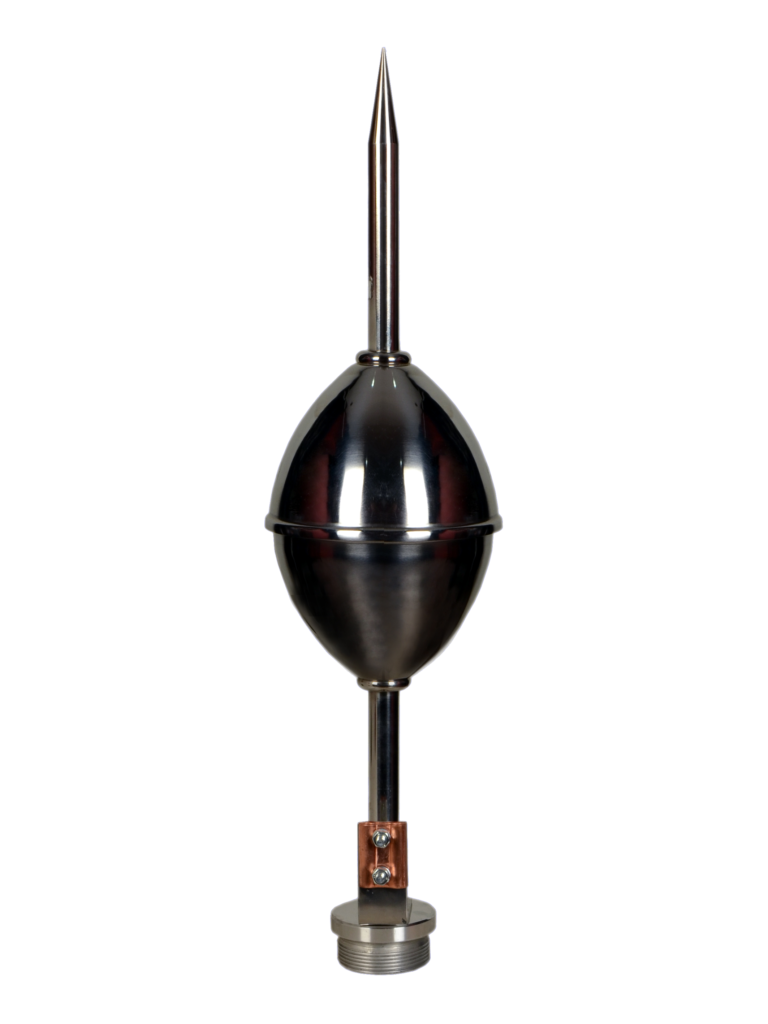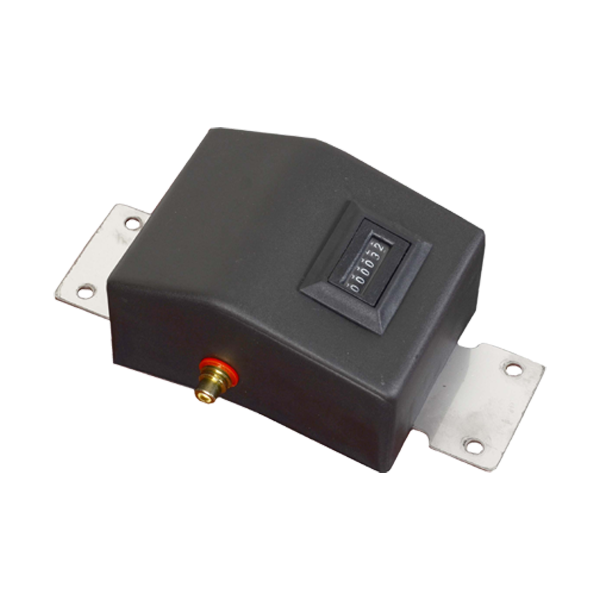ESE Lightning Protection System
Lightning is a natural phenomenon that can cause serious damage to buildings, infrastructure, and people. In order to prevent damage and protect against lightning strikes, lightning protection systems are used. One type of lightning protection system is the Early Streamer Emission (ESE) Lightning Arrester, which is a device designed to protect buildings and structures against lightning strikes.
Early Streamer Emission (ESE) Lightning Arrester
The ESE Lightning Arrester is designed to emit an early streamer of ions into the surrounding air, which increases the likelihood of a lightning strike being attracted to the arrester rather than the protected structure or equipment. The arrester is made from high-quality materials and is designed to withstand extreme weather conditions
One of the key features of our ESE Lightning Arrester is its protection coverage area. Our product is capable of covering a radius of up to 107 meters on a 5-meter mast for Level 4 protection, as per the NFC 17102 standard. This means that our product is capable of providing a high level of protection against lightning strikes, even in areas with a high risk of lightning activity.

Protection System
In addition to its protection coverage area, our ESE Lightning Arrester is also easy to install and maintain. Our product comes with all the necessary components, including a 2-5 meter GI mast, down conductor, and earthing materials, making installation quick and easy. We also recommend using NRB make Maintenance Free chemical earthing for better resistivity, ensuring that our product continues to provide reliable protection over time.
Mast for Lightning Arrester
The GI Mast is designed to support the ESE Lightning Arrester at a height that provides optimal coverage and protection for the structure or equipment being protected. The mast is made from high-quality GI material and is designed to withstand wind loads and other external forces.
Down conductor
The Down conductor is used to safely transfer the electrical charge from the lightning arrester to the earthing system. Our Down conductor is made from high-quality materials and is designed to withstand the extreme forces associated with a lightning strike.

Lightning Strike Counter
A lightning strike counter is a device that counts the number of lightning strikes that occur in a given area. It is a useful tool for monitoring the frequency of lightning strikes in a particular location and for determining the effectiveness of lightning protection systems.
The 6digit analog lightning strike counter from NRB Enterprise is a high-quality, reliable device that is designed to accurately count the number of lightning strikes that occur within its coverage area. It is an analog device, which means that it does not require any external power source to operate.
Earthing Materials
The Earthing materials are an essential component of our ESE Lightning Protection System. We strongly recommend using our NRB make Maintenance Free chemical earthing for better resistivity. Our earthing materials are designed to provide a low-resistance path to ground, which helps to safely dissipate the electrical charge from a lightning strike.

Advantage and difference between ESE and Franklin rod lightning arresters
The main difference between ESE and Franklin rod lightning arresters lies in their operating principles. Franklin rod lightning arresters are based on the principle of interception, while ESE lightning arresters are based on the principle of ionization.
Franklin rod lightning arresters are the traditional type of lightning protection system that has been in use for over a century. They consist of a tall, pointed metal rod that is attached to the roof of a building. When lightning strikes, the rod intercepts the lightning and provides a path of least resistance to the ground. The lightning is then safely conducted to the ground via a conducting wire or rod.
On the other hand, ESE lightning arresters work on a different principle. ESE lightning arresters are equipped with a system that ionizes the air around the lightning arrester before the lightning strike. This ionization causes the lightning to be attracted to the lightning arrester, which then conducts the electrical current safely to the ground. The ESE lightning arrester provides an early streamer of ionized air that attracts the lightning towards itself before it strikes the building.
One of the advantages of ESE lightning arresters over Franklin rod lightning arresters is their ability to provide a larger coverage area. ESE lightning arresters can cover a much larger radius of protection than Franklin rod lightning arresters. For example, an ESE lightning arrester with a 5-meter mast can provide protection up to a radius of 107 meters for level 4 protection as per NFC 17102. This is a significant advantage over Franklin rod lightning arresters, which have a limited coverage area.
Another advantage of ESE lightning arresters is their ability to provide faster protection. ESE lightning arresters are designed to provide protection within a few microseconds of the lightning strike, whereas Franklin rod lightning arresters may take several milliseconds to provide protection. This makes ESE lightning arresters a more reliable option for buildings and structures that require fast protection from lightning strikes.
In conclusion, both Franklin rod lightning arresters and ESE lightning arresters are effective lightning protection systems. However, the difference in their operating principles and coverage area makes ESE lightning arresters a more advanced and reliable option for lightning protection.
Overall, our ESE Lightning Protection System provides an effective and reliable solution for protecting structures and equipment from the destructive effects of lightning. All of our products are designed and manufactured to the highest quality standards and are backed by our commitment to customer satisfaction. Contact us today to learn more about our ESE Lightning Protection System and how we can help protect your assets from lightning strikes.